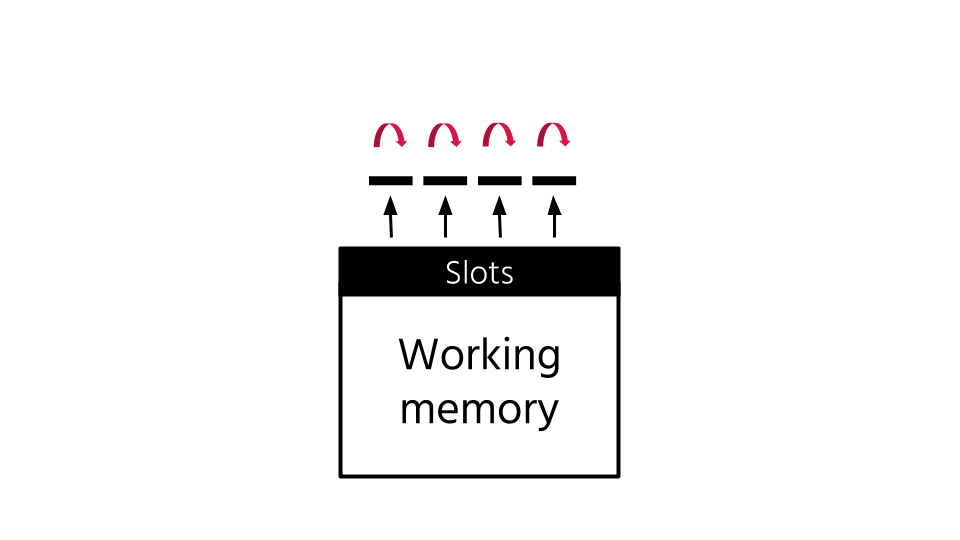12
Working memory is limited in capacity and duration. It can only hold a limited amount of information for a limited amount of time. Recent work suggests that working memory, on average, can only hold 4 chunks of information. We can think of it as having only 4 available slots (plus or minus one). And it can only hold information for 10-15 s unless that information is actively being rehearsed or applied (Kukushkin & Carew, 2017; Eriksson et al., 2015; Kandel, Dudai, & Mayford, 2014; Baddeley, 2012).

For example, imagine we have four slots. We meet someone and ask their name. We ask them what subjects they teach. We ask them how long they’ve been teaching. We ask them what they thought of the workshop. And with the next question – we’ve forgotten their name…. This happens to all of us. Quite regularly. We are trying to hold too much information in our working memory to maintain the conversation – and we end up losing a critical piece.
When working memory is overloaded and critical information gets pushed out, it is no longer available to be rehearsed, it doesn’t get replayed and is unlikely to be stored in LTM. “Objects with high levels of complexity may require additional resources to adequately resolve their details. Thus, working-memory performance may be reduced for such complex items due to insufficient precision at encoding” (Eriksson et al., 2015).
References
Limitations of Working Memory
- Eriksson, J., Vogel, E. K., Lansner, A., Bergström, F., & Nyberg, L. (2015). Neurocognitive architecture of working memory. Neuron, 88(1), 33-46.
- Kukushkin, N. V., & Carew, T. J. (2017). Memory Takes Time. Neuron, 95(2), 259-279.
- Cowan, N. (2008). What are the differences between long-term, short-term, and working memory?. Progress in brain research, 169, 323-338.
- Baddeley, A. (2012). Working memory: theories, models, and controversies. Annual review of psychology, 63, 1-29.
- Van Merriënboer, J. J., & Sweller, J. (2010). Cognitive load theory in health professional education: design principles and strategies. Medical education, 44(1), 85-93.
- Chen, O., Castro-Alonso, J. C., Paas, F., & Sweller, J. (2018). Extending cognitive load theory to incorporate working memory resource depletion: evidence from the spacing effect. Educational Psychology Review, 30, 483–501.
- D’esposito, M., & Postle, B. R. (2015). The cognitive neuroscience of working memory. Annual review of psychology, 66.
Media Attributions
- EN Illuminated eBook Graphics (11)
